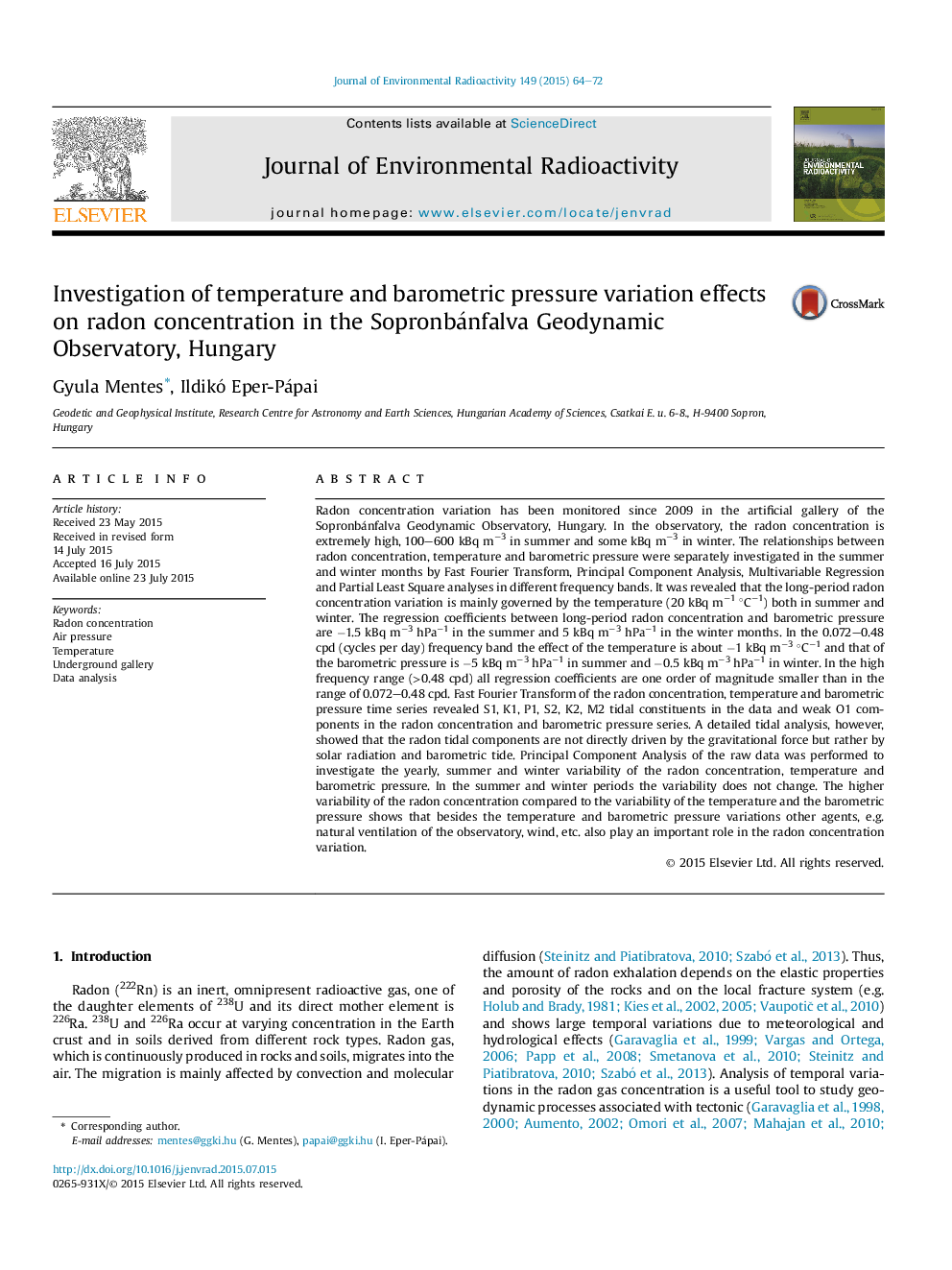| کد مقاله | کد نشریه | سال انتشار | مقاله انگلیسی | نسخه تمام متن |
|---|---|---|---|---|
| 1737825 | 1521584 | 2015 | 9 صفحه PDF | دانلود رایگان |

• Causes of Rn concentration variations are investigated in different frequency ranges.
• Long-period temperature variation has the largest effect on Rn concentration.
• Barometric pressure causes mainly short-periodic Rn concentration variations.
• Tidal frequencies in Rn concentration do not directly caused by gravity tide.
Radon concentration variation has been monitored since 2009 in the artificial gallery of the Sopronbánfalva Geodynamic Observatory, Hungary. In the observatory, the radon concentration is extremely high, 100–600 kBq m−3 in summer and some kBq m−3 in winter. The relationships between radon concentration, temperature and barometric pressure were separately investigated in the summer and winter months by Fast Fourier Transform, Principal Component Analysis, Multivariable Regression and Partial Least Square analyses in different frequency bands. It was revealed that the long-period radon concentration variation is mainly governed by the temperature (20 kBq m−1 °C−1) both in summer and winter. The regression coefficients between long-period radon concentration and barometric pressure are −1.5 kBq m−3 hPa−1 in the summer and 5 kBq m−3 hPa−1 in the winter months. In the 0.072–0.48 cpd (cycles per day) frequency band the effect of the temperature is about −1 kBq m−3 °C−1 and that of the barometric pressure is −5 kBq m−3 hPa−1 in summer and −0.5 kBq m−3 hPa−1 in winter. In the high frequency range (>0.48 cpd) all regression coefficients are one order of magnitude smaller than in the range of 0.072–0.48 cpd. Fast Fourier Transform of the radon concentration, temperature and barometric pressure time series revealed S1, K1, P1, S2, K2, M2 tidal constituents in the data and weak O1 components in the radon concentration and barometric pressure series. A detailed tidal analysis, however, showed that the radon tidal components are not directly driven by the gravitational force but rather by solar radiation and barometric tide. Principal Component Analysis of the raw data was performed to investigate the yearly, summer and winter variability of the radon concentration, temperature and barometric pressure. In the summer and winter periods the variability does not change. The higher variability of the radon concentration compared to the variability of the temperature and the barometric pressure shows that besides the temperature and barometric pressure variations other agents, e.g. natural ventilation of the observatory, wind, etc. also play an important role in the radon concentration variation.
Journal: Journal of Environmental Radioactivity - Volume 149, November 2015, Pages 64–72